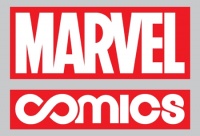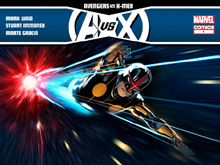
At the South By Southwest festival in Austin Marvel Comics unveiled Marvel Infinite Comics, a new digital-only imprint that will attempt to establish a new format for digital comics that takes advantage of the possibilities of the new digital comics medium and the potential of tablet computers, while being less slavishly tied both in the length of the story and the panel-to-panel flow to the standard print format. The first Infinite Comics release is Avengers VS. X-Men #1 Infinite, a Nova story by Mark Waid and Stuart Immonen that ties into the AvX event and which will be available for 99 cents or free with redemption codes found in print copies of AvX #1.
In addition Marvel announced Marvel AR, another digital program that it will also unveil in conjunction with the debut of AvX #1. Powered by Aurasma, Marvel AR is a free digital app that is targeted toward the print readers. It allows print readers to get free bonus content by swiping images in Marvel comics, promo posters, or other licensed merchandise items. The Marvel AR app, which will be available for free in April, will unlock all sorts of ancillary content such as interviews with creators or editors who can provide additional background on the story and its characters.
Marvel Infinite Comics, which will be sold via the Marvel comiXology app, will take advantage of the technical possibilities offered by today’s tablet computers and smart phones. Based in part on the pioneering digital comics work of French artist Yves “Balak” Bigeral, the Marvel Infinite Comics represent an attempt to utilize the narrative potential provided by the digital capabilities of tablet computers without losing the essence of the comic book reading experience. Comic conventions such as panel borders, word balloons, and captions will still exist in the new format, and most importantly the reader remains in control of the panel-to-panel flow. Readers will have control over the captions and word balloons in this new format, and panel transitions can be created (at times) by moving from the foreground to the background. This will definitely not be a “motion comic,” but something that is closer to print reading experience, though far more than just a scanned version of a digital comic.



_MD.jpg)
